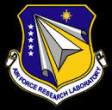AFRL posts ISR-related BAA
 On July 18, the Air Force Research Laboratory posted a broad agency announcement for Deep Learning for Actionable Intelligence Discovery and Exploitation (BAA AFRL-RIK-2015-0014). White papers will be accepted until 2:00 p.m. Eastern on June 28, 2019, but earlier submissions have a greater chance of receiving funding.
On July 18, the Air Force Research Laboratory posted a broad agency announcement for Deep Learning for Actionable Intelligence Discovery and Exploitation (BAA AFRL-RIK-2015-0014). White papers will be accepted until 2:00 p.m. Eastern on June 28, 2019, but earlier submissions have a greater chance of receiving funding.
The goal of this Broad Agency Announcement (BAA) is to develop and demonstrate a time-dominant data fusion and closed-loop Intelligence, Surveillance and Reconnaissance (ISR) system for intelligence customers. The system will automate threat detection and classification with speed and precision and in a tactically relevant timeframe, automate the generation of in-mission intelligence reports, and be responsive to intelligence squadron needs. This announcement is for acquisition under the Neuromorphic Fusion of Timely Intelligence (NFTI) program.
The first objective is to develop an Exploitation Cloud that is significantly, if not completely, insusceptible to agile threats that attempt to deceive our RF/SIGINT (Radio Frequency/Signal Intelligence) products which rely on time difference of arrival (TDOA) based information. The Exploitation Cloud will also be designed to combat advanced tactics in camouflage concealment & deception (CC&D). The second objective is to “Close the ISR Loop” by developing the Actionable Intelligence Discovery and Exploitation (AIDE) service on a modernized SOA (Service-Oriented Architecture). AIDE will be cognizant of intelligence squadron needs through Human Intelligence (HUMINT) analysis of former and current mission intelligence reports, as well as other contextual information such as analyst chat/chat logs. AIDE will have the capability to deliver new actionable intelligence from the Exploitation Cloud or open-source intelligence (OSINT). The system will automatically generate tactical and in-mission intelligence reports. Prioritization on the discovery and exploitation of additional intelligence pertaining to detected emerging threats can be automatic or managed by an analyst or squadron commander with human-system integration in mind. The final objective is to focus the advanced raw data fusion capability of the Exploitation Cloud on the collection and processing of both known and unanticipated threats by responding to the analyst and mission needs derived from the second objective. This final objective also serves to reduce the communications bandwidth required for raw data fusion by only transmitting data within the aerial network that is required for high priority intelligence gathering. The goal is to seamlessly and pervasively capture user and mission intelligence needs to limit additional analyst search/query tasks and manual intelligence report documentation.
Focus areas of the BAA are as follows:
1) Closing the ISR Loop. This focus area seeks to develop the AIDE service which seamlessly and pervasively captures analyst intelligence need and can translate that need into the focused gathering from all available intelligence sources for the purposes of producing and providing additional actionable intelligence in a tactically relevant timeframe. AIDE should reason over unstructured text (OSINT, social media) and fused multi-source digital imagery data (such as Electro-Optical, Synthetic Aperture Radar, Infrared, and Hyperspectral) to automatically draft reports such as Intelligence Reports, Essential Elements of Information and In-Flight Reports for users, prioritize collection of sensing systems in the Exploitation Cloud, and potentially assist in Intelligence Preparation of the Battlespace (IPB). Approaches should consider applying and extending recent advances in deep learning, such as convolutional neural networks with localized object detection and classification, scene understanding/image captioning, text analytics using symbolic statistical inference, natural language processing for intermediate metadata tagging of text, context generation and semantics, and recommendation systems. Solutions should consider implementing AIDE on high performance computing (HPC) architectures by leveraging general purpose graphics processing units (GPGPU) technology for imagery analytics, leveraging open-source frameworks for all necessary analytics, and be embedded in an SOA across many networked systems that exposes the intermediate components of AIDE to other services in the architecture.
2) Exploitation Cloud. This focus area seeks to develop technologies capable of discovering and detecting anticipated and unanticipated events or targets of interest and be able to characterize them under various difficult sensing conditions within an aerial network of platforms. Approaches should consider conditions with low probability of intercept, deceptive conditions, advanced electronic warfare, short up time emissions, poor environmental conditions, dynamic Radio Frequency characteristics, and others. The solutions should consider exploiting multiple hard ISR data sources jointly (multi-source, multi-intelligence fusion) in order to optimize discovery. Hard ISR data refers to target signature data that is sensed and digitally converted; examples include passive Signals Intelligence (SIGINT), Radio Detection and Ranging (RADAR), Full Motion Video (FMV), imagery, and acoustical data. Jointly means that innovative methods should consider combining, or fusing, multiple modalities together in order to take advantage of inter-modal dependencies and phenomenology. In particular, developments that utilize upstream fusion of heterogeneous sensing data are of interest. Solutions to these objectives should consider advancements in machine learning as in focus area (1), as well as statistical and geometric data analysis approaches. An additional objective is to be able to distribute the algorithmic solutions amongst distributed sensing platforms but still maintain performance similar to that of centralized processing. Solutions must consider requirements for platform to platform communications and on-board computing requirements.
Full information is available here.
Source: FedBizOpps







